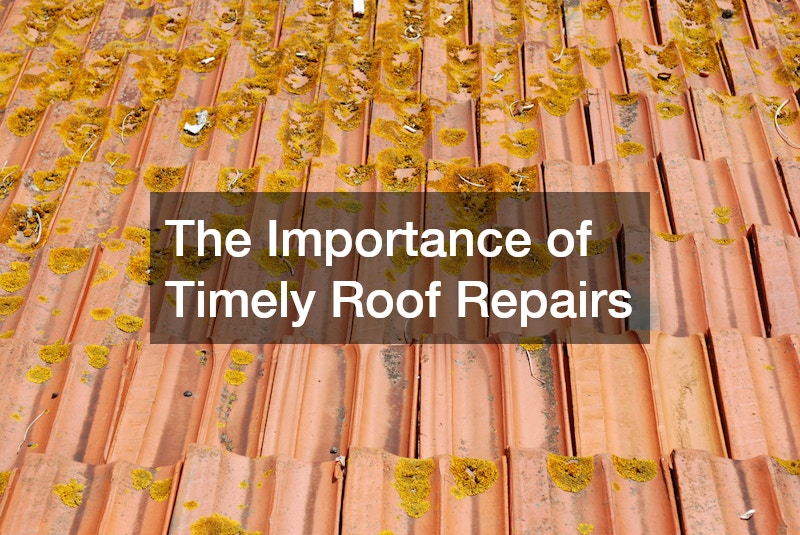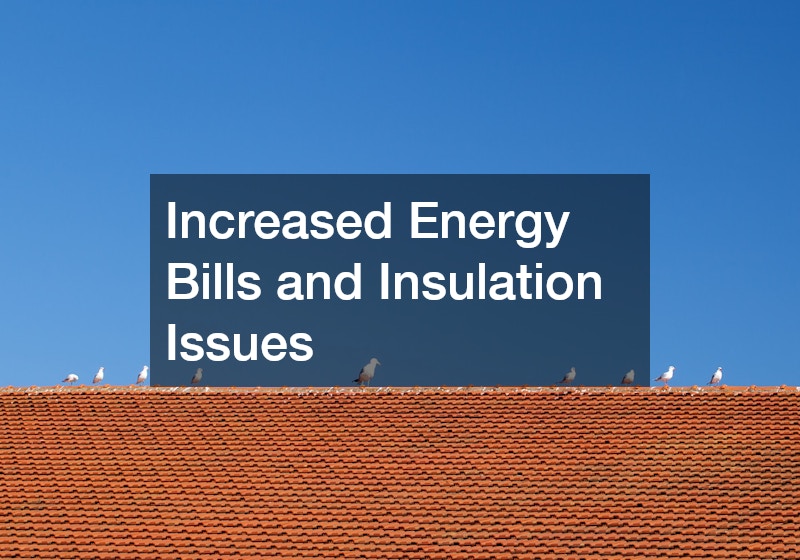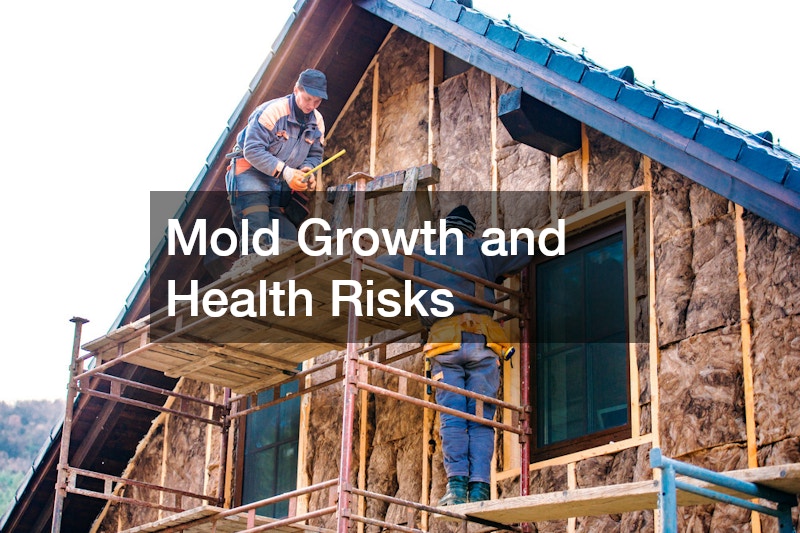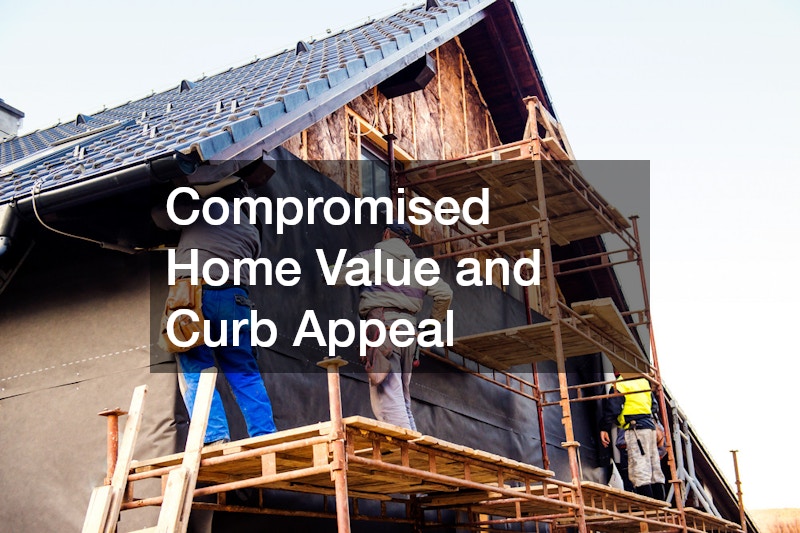It’s easy to overlook a small leak in your ceiling or a few missing shingles on your roof. Homeowners often assume that as long as water isn’t pouring inside, repairs can wait. Unfortunately, ignoring even minor roof damage can lead to major expenses, structural problems, and health risks down the line. A roof doesn’t just protect your home from rain—it shields your family from the elements, stabilizes your indoor temperature, and preserves the overall integrity of your property.
Every roof has a lifespan, and over time, exposure to harsh weather, debris, and age-related wear weakens its ability to perform. The longer these problems go unresolved, the more hidden costs begin to accumulate. From water damage and mold growth to electrical hazards and declining property value, neglecting your roof can quietly drain your finances.
This guide breaks down the real, often unseen costs of ignoring roof issues. By understanding how small problems become expensive repairs, you can make smarter decisions to protect your home and wallet before it’s too late.

The Importance of Timely Roof Repairs
Your roof is your home’s first line of defense against wind, rain, snow, and sun. When it’s compromised, the rest of your home quickly follows. Roof damage might start small—a few missing shingles, a loose flashing, or a minor leak—but water doesn’t need a large opening to find its way inside. Over time, moisture can seep through underlayment, insulation, and ceiling materials, spreading silently through the structure.
Timely repair is essential because roofing materials are interconnected. Once one part fails, it places additional stress on surrounding areas, leading to faster deterioration. For example, cracked shingles can expose the underlayment, while loose flashing allows water to penetrate walls and chimneys. Ignoring these issues allows damage to spread exponentially.
Most residential roofers emphasize the importance of yearly inspections for this reason. An inspection can reveal small issues before they evolve into serious problems. Identifying trouble early also prevents secondary damage to insulation, framing, and even electrical systems. A few hundred dollars spent on maintenance now could save thousands in future repairs.
Small leaks often go unnoticed because they develop in attics or behind walls. By the time homeowners spot stains on their ceilings or feel musty odors, the damage is usually far worse than it appears. Acting quickly when early warning signs appear can prevent hidden costs that only grow over time.
Water Damage and Structural Deterioration
Water is the number one enemy of any home’s structure. A leaking roof allows moisture to infiltrate your home’s framework, leading to wood rot, sagging ceilings, and weakened supports. Even a slow drip can compromise beams and rafters over time, especially in humid environments.
When water enters through your roof, it often seeps into insulation and drywall, creating the perfect breeding ground for mold and mildew. These organisms spread quickly and can lead to health problems if left untreated. Once mold takes hold, homeowners may need to replace large sections of drywall and insulation, dramatically increasing repair costs.
The damage doesn’t stop there. Persistent leaks can warp flooring, stain walls, and compromise ceiling paint. In advanced cases, severe roof leaks cause entire sections of the ceiling to collapse, requiring complete reconstruction. The expense of repairing a structural issue caused by moisture is far greater than the cost of repairing the original leak.
Proper roofing maintenance ensures that shingles, flashing, and sealants remain intact, reducing the risk of long-term water infiltration. Regular inspections after heavy storms or seasonal changes are critical to keeping your structure sound. Left unchecked, water can quietly destroy your home from the inside out.

Increased Energy Bills and Insulation Issues
Your roof also plays a critical role in maintaining your home’s energy efficiency. A damaged roof allows heated or cooled air to escape, forcing your HVAC system to work harder and increasing your energy bills. Over time, this extra strain can reduce the lifespan of your heating and cooling units as well.
When insulation becomes damp due to leaks, it loses its ability to regulate temperature. Wet insulation clumps together and no longer provides an even barrier, allowing drafts and heat transfer between your attic and living spaces. Homeowners often notice that certain rooms feel colder in the winter or hotter in the summer without understanding that the problem begins above them.
Moisture-damaged insulation also promotes the growth of mold and mildew. In many cases, the insulation must be removed and replaced entirely, adding yet another hidden expense to your list. Preventing roof leaks is one of the most effective ways to protect your home’s energy performance.
A local roofer can assess whether roof damage is contributing to insulation problems and recommend solutions. Addressing leaks early, sealing gaps, and ensuring proper ventilation are all essential to maintaining energy efficiency. Ignoring the problem leads to recurring discomfort and steadily rising energy costs month after month.
Interior Damage: Ceilings, Walls, and Flooring
When roof leaks go unresolved, the effects eventually become visible inside your home. You may notice brown stains spreading across your ceilings or peeling paint around window frames. These cosmetic issues are just the surface signs of deeper damage within your walls.
As water infiltrates your ceiling, it seeps downward through the structure. Drywall softens, paint blisters, and wood framing can swell or warp. In severe cases, homeowners may find that sections of the ceiling begin to sag or crumble. Replacing damaged drywall and repainting can cost far more than addressing the leak at its source.
Water can also run down walls and pool along baseboards, damaging flooring materials such as hardwood, carpet, or laminate. If moisture reaches electrical outlets or fixtures, the risk of short circuits increases. Even if the initial damage appears minor, the combined costs of painting, flooring, and electrical repairs can quickly add up.
This type of cascading damage is why roofing contractors stress immediate attention to any signs of water intrusion. Every drop that enters your home through a damaged roof contributes to cumulative decay—and the longer you wait, the more widespread the repairs will be.

Mold Growth and Health Risks
Mold is one of the most dangerous consequences of a neglected roof. Once water enters your home and saturates insulation, ceilings, or walls, it creates a moist environment where mold can thrive. These spores multiply quickly and release allergens and toxins into the air, posing serious health risks.
Even if mold starts in the attic, it can spread through ventilation systems and circulate throughout the house. People with asthma or weakened immune systems are especially vulnerable to mold exposure. Common symptoms include respiratory irritation, coughing, headaches, and skin rashes.
Removing mold from an attic or wall cavity requires specialized treatment and containment. The process can cost thousands of dollars and often involves removing entire sections of drywall, insulation, and flooring. What began as a small roof leak could lead to a major health hazard requiring professional remediation.
Regular inspections from reputable roofing companies help prevent mold by identifying leaks and areas of moisture buildup before they escalate. Quick response is key—addressing leaks early can protect both your health and your home’s structural integrity.
Damage to Gutters and Drainage Systems
Your roof and gutters work together to divert water safely away from your home. When roof damage is ignored, it often leads to clogged or overburdened gutters that can no longer perform effectively. Debris from broken shingles or deteriorating flashing can accumulate inside gutter systems, causing water to overflow and pool near your foundation.
Standing water around your home increases the risk of basement leaks, foundation cracks, and soil erosion. Over time, the added weight from trapped debris can cause gutters to pull away from the roofline or bend out of shape. Replacing gutter systems is costly but often necessary once structural warping occurs.
Professional roofing contractor services can inspect not just the roof surface but also adjacent systems like gutters and downspouts. They can identify whether your water drainage system is performing properly or if hidden roof damage is contributing to overflows. Preventing these problems saves homeowners from costly foundation and landscaping repairs later on.

Compromised Home Value and Curb Appeal
One of the most overlooked consequences of roof neglect is the impact on your home’s value. Potential buyers notice roof condition immediately—it’s often one of the first things home inspectors assess. Even if a roof looks fine from the ground, signs of wear, missing shingles, or sagging lines can raise red flags about underlying issues.
A damaged roof reduces buyer confidence and gives them leverage to negotiate lower prices. In some cases, buyers may walk away entirely once they see the potential cost of repairs. A well-maintained roof, on the other hand, reassures prospective owners that the property has been cared for.
Beyond aesthetics, roof condition directly affects insurance coverage. Some insurers refuse to renew or issue policies on homes with aging or damaged roofs. This limits buyer options and further diminishes resale value.
Investing in maintenance or a full roof replacement when necessary protects your home’s worth and provides peace of mind. A strong, attractive roof not only boosts curb appeal but also serves as a visible sign of quality and care.
The Risk of Electrical Hazards and Fire
Water and electricity are a dangerous combination, and leaking roofs create serious safety risks when moisture reaches electrical wiring. Even small leaks near lighting fixtures, ceiling fans, or outlets can cause short circuits and electrical fires.
Water can also seep into wall cavities, corroding wiring or damaging junction boxes over time. You may notice flickering lights, tripped breakers, or sizzling sounds—warning signs that should never be ignored. If roof damage allows consistent moisture to contact electrical systems, the risk of shock or fire increases dramatically.
Professional electricians can assess these hazards, but the best prevention is to maintain your roof and prevent leaks in the first place. If water intrusion has already occurred, immediately shut off affected circuits and schedule an inspection with a certified roofing company and electrician. Prompt attention not only prevents further damage but also protects your family’s safety.
Preventative Measures and Professional Maintenance
Proactive maintenance is the key to avoiding the hidden costs of roof damage. Homeowners who schedule annual inspections and minor repairs save significantly compared to those who wait until major leaks occur. Regular maintenance also extends your roof’s lifespan by addressing early signs of deterioration.
Start by inspecting your roof visually from the ground after major storms. Look for missing shingles, bent flashing, or debris buildup. Inside your home, check for damp spots in the attic or ceiling discoloration. If you notice anything suspicious, contact local roofing contractors for a professional evaluation.
Keeping your roof clear of debris and overhanging branches also makes a difference. Hiring local tree services to trim nearby limbs prevents falling branches from damaging shingles and gutters. Clear gutters ensure that rainwater drains properly instead of backing up under your roofline.
Establishing a maintenance schedule may include periodic cleaning, sealing around vents and chimneys, and checking for damaged flashing. Many homeowners also choose biannual roof inspections—in spring and fall—to prepare for seasonal weather shifts.
By addressing small issues immediately, you prevent the gradual, invisible costs that come with roof neglect. Maintenance might not seem urgent, but it’s the most cost-effective form of protection you can invest in for your home.
Long-Term Financial Impacts of Roof Neglect
Ignoring roof issues doesn’t just cause physical damage—it creates financial strain that compounds over time. The initial cost of repair might seem high, but it pales in comparison to the cumulative expenses of inaction.
Consider a minor leak that could have been fixed for a few hundred dollars. Left unattended, that same leak may destroy insulation, require drywall replacement, and lead to mold remediation. Add higher energy bills and possible structural repairs, and the total cost could reach tens of thousands of dollars.
Homeowners often underestimate how rapidly water damage spreads. Once moisture penetrates the roof deck, it seeps into joists, ceilings, and walls, creating a chain reaction of decay. Insurance coverage may also be denied if adjusters determine that the damage resulted from neglect rather than a sudden event.
Working with a reputable roofing company for routine inspections helps prevent these long-term costs. Roof maintenance is an investment that preserves your home’s structure, improves efficiency, and avoids the burden of unexpected, large-scale repairs.
Regional Weather and Its Role in Roof Deterioration
Climate plays a huge role in roof health. Homes located in areas with heavy rain, snow, or wind are especially vulnerable to damage. Freezing and thawing cycles can cause shingles to crack or curl, while intense heat leads to blistering or fading.
Seasonal maintenance becomes even more important in these regions. After every major storm, homeowners should inspect for loose materials, missing flashing, or pooling water. Early intervention keeps damage localized and easier to repair.
Roofing contractors in different climates often recommend region-specific materials. For example, impact-resistant shingles are ideal for hail-prone areas, while metal roofing performs well in regions with heavy snowfall. Understanding how the weather affects your roof allows you to plan maintenance more effectively and avoid unnecessary expenses.
Professional Expertise and Warranty Protection
Many homeowners are surprised to learn that neglecting maintenance can void their roof’s warranty. Manufacturers and installers typically require periodic inspections and prompt repair of any damage to maintain coverage. Skipping maintenance means footing the bill yourself when problems arise.
This is where working with reputable roofing companies becomes critical. Professionals know how to document inspections, file warranty claims properly, and perform repairs that meet manufacturer standards. DIY fixes, on the other hand, can void warranties and create more problems.
Building a long-term relationship with a trusted local roofer ensures you have consistent records of maintenance and service. This not only safeguards warranty coverage but also provides reliable support if major repairs or replacements become necessary.
Planning for the Future: When Repairs Aren’t Enough
No roof lasts forever. Depending on materials and climate, most residential roofs last between 20 and 50 years. Eventually, repairs may no longer be sufficient to maintain safety and efficiency.
When multiple leaks, widespread shingle loss, or structural sagging occur, it’s time to consider a full roof replacement. While the upfront cost may seem daunting, replacement eliminates recurring repair expenses and provides peace of mind for decades. It also allows you to upgrade materials for better energy performance and storm resistance.
Modern roofing materials are designed for durability and sustainability, and new technologies continue to improve lifespan and energy efficiency. Investing in replacement before catastrophic failure not only protects your home but can also increase its value significantly.
The Ripple Effect on Other Home Systems
A neglected roof doesn’t just affect the top of your house—it impacts nearly every other system inside. Water intrusion can compromise plumbing vent stacks, insulation, and attic ventilation systems. Poor ventilation allows heat and moisture to accumulate, leading to warped rafters and deteriorated underlayment.
Electrical wiring, HVAC ductwork, and even your home’s foundation can suffer secondary damage. Persistent leaks can trickle down through multiple levels, damaging everything in their path. Repairing these connected systems multiplies overall expenses far beyond roofing costs.
This interconnectedness is why local roofers recommend treating roof maintenance as part of whole-home care. A strong roof protects every other investment you’ve made in your property, from electrical systems to flooring.
The true cost of ignoring roof damage extends far beyond a few visible leaks. What starts as a minor issue can evolve into thousands of dollars in structural repairs, rising energy bills, mold remediation, and reduced property value. Your roof quietly protects your home every day, but it requires regular attention to continue doing so effectively.
Routine inspections, immediate repairs, and preventative maintenance are the best ways to avoid the hidden expenses of roof neglect. Partnering with experienced professionals—whether residential roofers, local roofing contractors, or roofing companies—ensures that your home remains safe, efficient, and structurally sound.
Ignoring roof damage doesn’t save money; it multiplies costs. By staying proactive, you not only extend your roof’s life but also protect the comfort, safety, and long-term value of your home.

